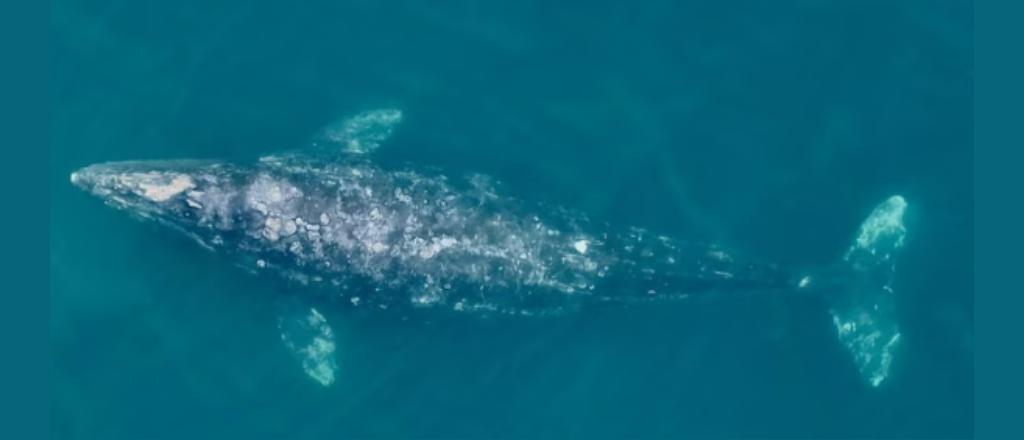Gray whales, known for their majestic migrations and iconic presence in the oceans, are facing a concerning trend: a significant reduction in body length over the past two decades. A recent study conducted by Oregon State University (OSU) has shed light on this alarming phenomenon, highlighting potential implications for the health and reproductive success of these marine giants, as well as broader concerns within their marine food web.
Understanding the Gray Whale Decline
The study, published in the prestigious journal Global Change Biology, focused on the Pacific Coast Feeding Group (PCFG) of gray whales. This subgroup, consisting of approximately 200 individuals within the larger Eastern North Pacific population, spends its summers feeding in the shallow, nutrient-rich waters off the Pacific Northwest coast. Unlike other gray whales that migrate to Arctic seas, the PCFG remains closer to shore, relying on the abundant food resources found in these warmer waters.

Researchers from OSU’s Marine Mammal Institute and the Geospatial Ecology of Marine Megafauna (GEMM) Lab analyzed drone images collected between 2016 and 2022, encompassing 130 individual gray whales of varying ages. The findings revealed a startling trend: gray whales born after the year 2000 are notably smaller than those born earlier. Specifically, adult whales born in recent decades are, on average, 1.65 meters (approximately 5 feet, 5 inches) shorter than their predecessors—a reduction equating to over 13% of their total body length.
Implications for Whale Health and Reproduction
Size plays a critical role in the lives of marine mammals like gray whales. It influences their behavior, physiology, and reproductive success. Lead author Enrico Pirotta from the University of St. Andrews emphasized that smaller body size could have significant implications for whale calves, potentially affecting their ability to survive independently after weaning. For adult whales, smaller size may mean challenges in allocating sufficient energy reserves for reproduction and sustaining population growth.
The study also raised concerns about the broader implications within the gray whale’s marine ecosystem. Changes in body size could reflect underlying shifts in environmental conditions and prey availability. Gray whales predominantly feed on benthic amphipods and other bottom-dwelling organisms found in shallow waters. Shifts in oceanic upwelling patterns, influenced by climate change impacts on wind and water temperatures, may disrupt the availability of these essential prey species, impacting the whales’ ability to maintain their large size.
Environmental and Ecological Significance
Co-author K.C. Bierlich from OSU’s Marine Mammal Institute highlighted the role of gray whales as indicators of ecosystem health. Whales are often considered “ecosystem sentinels,” reflecting broader environmental conditions. A decline in body size among gray whales could signal underlying ecological changes, potentially indicating disruptions in the marine food web and ecosystem dynamics.
The study underscores the need for continued research to understand the drivers behind this size decline. Ongoing field studies by OSU researchers will further investigate environmental factors influencing the body condition of PCFG whales. These efforts aim to unravel the complex interactions between climate change, prey availability, and whale health, offering critical insights into conservation strategies for these vulnerable marine mammals.
Conservation and Future Directions
Conservation efforts for gray whales and their habitats are crucial in light of these findings. Mitigating climate change impacts, reducing ocean pollution, and minimizing human disturbances such as ship strikes and fishing gear entanglements are essential steps in protecting whale populations. Collaborative initiatives involving scientists, policymakers, and coastal communities are vital for implementing effective conservation measures that safeguard the long-term health and resilience of gray whales and their ecosystems.
In conclusion, the shrinking size of gray whales along the Pacific Northwest coast serves as a poignant reminder of the interconnectedness between marine species and their environments. By addressing the underlying causes and implementing proactive conservation strategies, we can work towards ensuring a sustainable future for these magnificent marine mammals and the marine ecosystems they inhabit.





